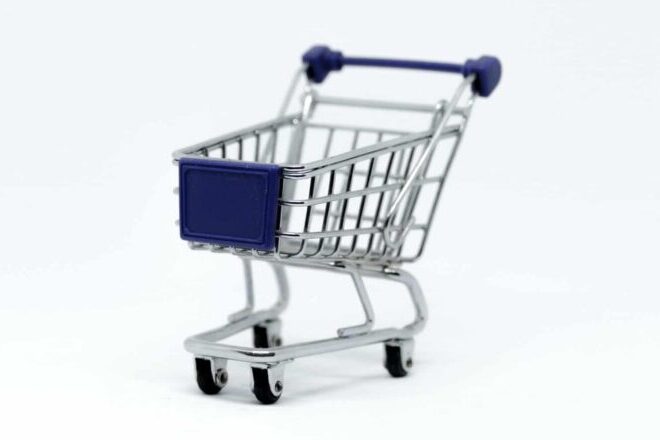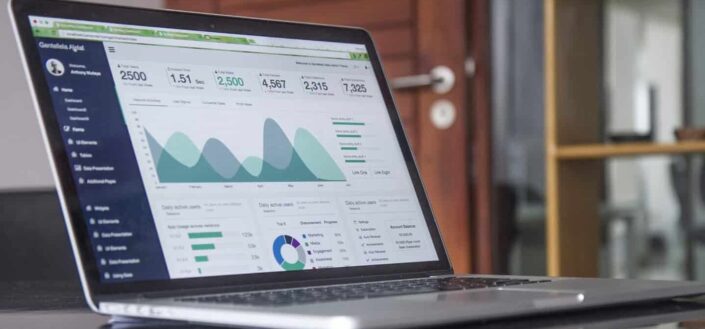
Pexels / Emirkhan Bal
Are you an online retailer who is into starting a new business but still needs clarification on what does AOV stand for and why it matters? Well, worry no more.
While there are several e-commerce metrics you should be knowledgeable of, AOV is one of those business benchmarks that’s of big help when it comes to figuring out problems, solutions, and overall decision-making for your company. And as chief writer and editor of WPExperiments, you’ve seen posts of mine such as what is a metric and what does USP stand for, so you know I’m an expert in web development.
So let’s get started.
Contents
What is AOV?

Unsplash / Carlos Muza
AOV, or Average Order Value, is a metric in the e-commerce world that measures the average dollar amount a customer spends every time he makes a purchase online or from an app. Having a good understanding of your company’s AOV helps in the decision-making process when it comes to your marketing, how your store is laid out, or the prices you put on your products. It also gives you a heads-up on customer standards which can assist in building your company’s strategies and seeing if they work. AOV is calculated by simply dividing your store’s total revenue by the number of orders.
How is AOV Different From Conversion Rate And Revenue Per Visit?

Unsplash / Kobu Agency
The main difference between Average Order Value (AOV), Conversion Rate, and Revenue Per Visitor (RPV) is the factors for success they measure in your online business. These three e-commerce metrics are vital in tracking the behavioral trends of your consumers, which in turn can be used to improve your services and products. Let us dive deeper into how you can differentiate one from the others.
Conversion Rate
While AOV measures how much each customer spends from purchasing products on your site, the Conversion Rate (CR) measures the percentage of your online store’s visitors who buy a product or service. It tells you if your marketing content and website effectively get people to purchase goods and services easily. To calculate your store’s CR, divide the total number of visits to your site by the complete transactions made (aka purchases). For example, if 50 conversions or complete transactions were made from the 500 site visits or interactions for the last month, then your conversion rate is 10%.
Revenue Per Visit
After getting people to visit your site and increase traffic, it’s time to find ways to improve the most important factor in a business: revenue. Revenue Per Visit or RPV, tells you how much revenue each site visitor drives, helps you understand more the role and relationship between CR and AOV, and gives a more detailed figure on your store’s performance. While AOV looks at the relationship between total revenue and the total number of orders, RPV is calculated by dividing the total revenue by the total number of site visits.
Tips On How To Improve The Average Order Value

Unsplash / Headway
Average Order Value is one of the most important metrics a business should consider in every decision-making process. It can give a clear picture of what your customers want and how they would react to changes in your product. So, in what ways can you boost your AOV?
Tip #1: Cross-selling.

Unsplash / Jason Goodman
What is cross-selling, you say? Well, it is one of the most effective marketing strategies in the world of business. Cross-selling refers to selling relatable or complementary products to the other goods available on your site. This strategy aims to add more revenue and get your customer to buy an additional product or two they’d need with their first purchase.
Tip #2: Upselling.

Unsplash / Igor Miske
When you try to upsell to customers, you give them product recommendations than what they already have in mind. In short, you offer them an upgrade. This upgrade is usually more expensive, thus generating higher revenue for the company.
Tip #3: Volume discounts.

Unsplash / Artem Beliaikin
Giving customers volume discounts is another way to increase your AOV. When businesses and customers buy bulk or multiple items, the seller rewards them with a discount or a great deal. In doing so, customers easily see you as a potential steady supplier for them through this pricing strategy.
Tip #4: Free shipping.

Unsplash / Erik Mclean
Free shipping has been a major selling point for many online businesses. Not only does this boost your AOV, but offering free shipping gives you an edge over those who don’t. Customers often see the additional shipping cost as a burden, so they look for other sites that offer this incentive instead.
Tip #5: Coupons.

Unsplash / Perry Merrity
Coupons can guarantee repeat orders or customers coming back for another purchase. The discount offer provided by these coupons entices customers and increases the volume of sales. And with the expiration dates indicated on these stubs, expect customers to buy more products faster.
Tips #6: Donations.

Unsplash / Markus Winkler
So, how does this tactic help your business’s AOV? While people want to save money from their purchases, it’s hard to resist donating to others. Not only this, companies that offer donations attract more customers as they are deemed charitable and supportive of certain causes.
Tips #7: Return policy.

Unsplash / Bench Accounting
Having to flexible return policy gives customers the confidence to purchase from your site more often and with more items in their carts. Making an easy return process for the buyers means less tension when exchanges and returns are made.
5 Benefits of Improving Average Order Value

Pexels / Suzy Hazelwood
Knowing what AOV is is different from understanding what you can get from improving it. The increasing average order value does wonders for your business.
#1: Drive Revenue Growth.

Unsplash / Austin Distel
Revenue growth is what we want to see in an eCommerce store. And improving your AOV will do just that! See, as you work on getting your store higher AOV through different strategies, you are also increasing your customer’s cart size, translating into a much higher revenue through profit-per-order than having just a single purchase from a customer.
#2: Protect eCommerce Margins.

Unsplash / Brooke Lark
Imagine having to ship a single item at the expense of your business. As you increase your AOV, you will reduce the shipping cost by ensuring your customers check out more than one item from your site protecting your profit margin.
#3: Improve Customers’ Lifetime Value.

Pexels / Karolina Grabowska
Customer Lifetime Value (CLTV) refers to the profit or lifetime revenue generated by loyal customers throughout their commitment to the company. Since acquiring a new customer will cost you, you must encourage existing customers to return to your store through a loyalty program. Repeat customers create the highest value and require the least amount of money and effort.
#4: Drive Marketing Channel Profitability.

Pexels / Karolina Grabowska
Improving your business’s AOV enables you to also build on the profitability of your marketing channels. Enhancing the AOV allows you to improve your return on ads spent or ROAS, helping you to use the extra money saved for future marketing.
#5: Improves Conversion Rate.

Pexels / Karolina Grabowska
When you improve your AOV, your site’s conversion rate follows. Strategies like free shipping, upselling, and cross-selling allow customers to check out other products you offer, thus keeping them onsite.
How AOV Impacts Other Business Decisions

Unsplash / Anete Lusina
You have so much information about your business just by looking at its AOV. So your AOV has something to do with some major and minor business decisions.
#1: Advertising spending.

Pexels / Karolina Grabowska
The more the competition, the better the advertising of your products should be and thus comes the cost. Knowing your AOV helps you budget your advertising investment and marketing efforts. Spending more on advertisements than the value of your AOV is a red flag in businesses.
#2: Buying patterns and trends.

Pexels / Pixabay
Your site’s AOV gives you a glimpse of your customers’ buying patterns. The buying habits of your customers change every season, so the AOV tells you when your sales peak and dip. It determines which products and marketing campaigns your customers prefer, giving you an idea of what you are doing wrong or which to focus on to increase revenue.
#3: Conversion cost.

Pexels / Karolina Grabowska
Conversion cost is the total cost of generating traffic to your site and converting this traffic to paying customers. Knowing your site’s AOV can create a refined strategy to convert visitors to customers and increase their purchases from your store.
Frequently Asked Questions

Pexels / Christin Hume
For more answers to your queries on AOV, check out these items below:
How do you calculate the average order value?
Average order value is calculated by dividing an online site’s total revenue by the number of orders or successful purchases made.
What is a good average order value?
A good average order value will depend on several factors, such as the type of industry, the devices customers use to visit your site, and how often you check your AOV. A good AOV is a value higher than the cost of what you are selling.
Why is the average order value important?
AOV is important because it provides insight into customer behavior and how to effectively sell their products and make necessary improvements in terms of marketing, pricing, etc. Increasing AOV means you are also driving revenue into the business.
What is the average basket value?
The average basket value is defined as the average amount spent by a customer in a single transaction. It is used to track the trend in the number of items purchased per transaction. To compute this, simply divide the overall value of transactions made by the number of sales.
More Interesting Articles To Explore
To learn more about this digital era, check out some of the great articles we have for you:
- If google tag manager vs. google analytics is your issue, here’s a great read.
- Check this article for more answers on what is a microsite.
- Learn about the benefits of using a customer data platform to optimize your business operations.
- Also, explore a selection of top WordPress themes to create an impressive website.





